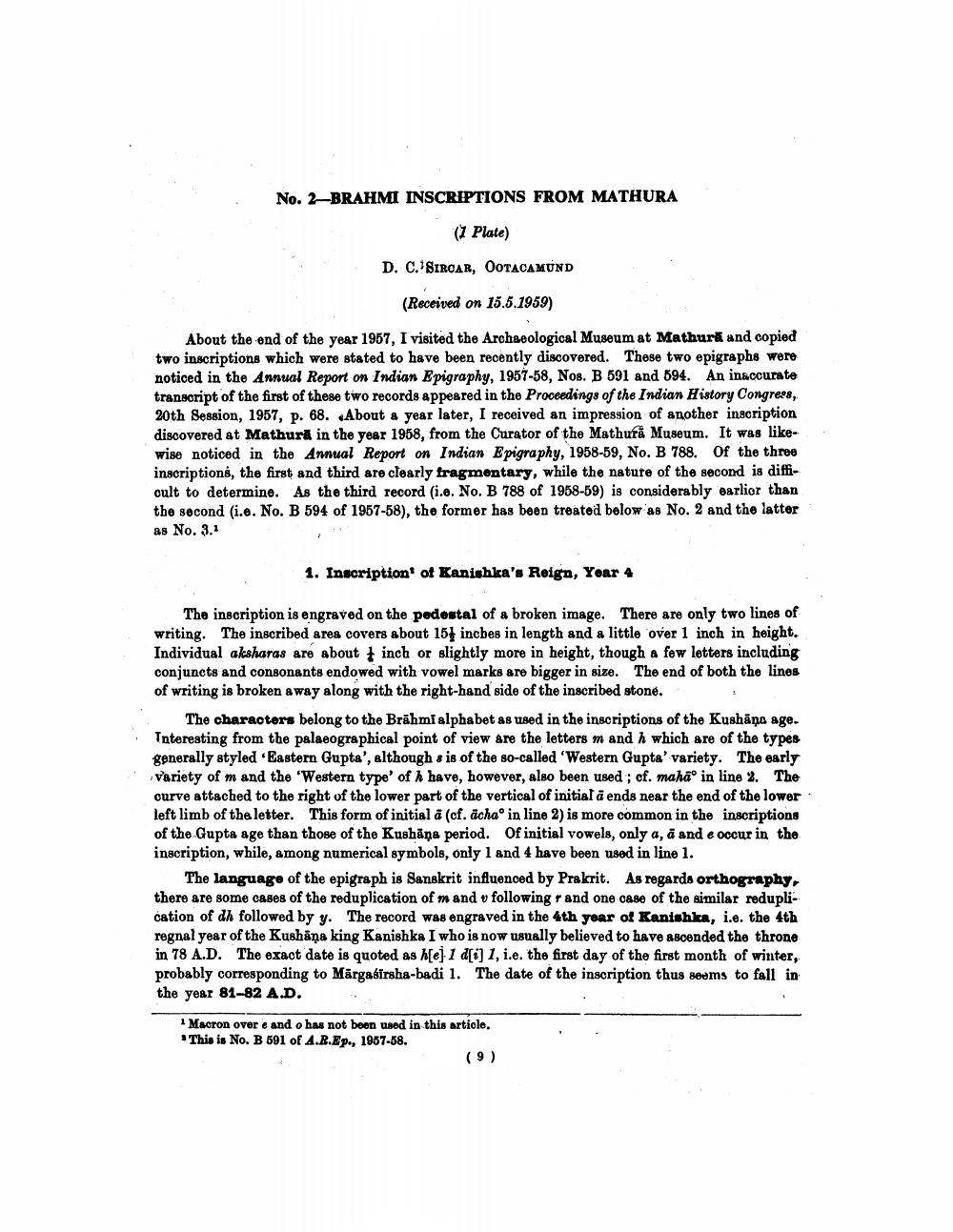________________
No. 2-BRAHMI INSCRIPTIONS FROM MATHURA
(1 Plate)
D. C. SIRCAR, OOTACAMUND
(Received on 15.5.1959)
About the end of the year 1957, I visited the Archaeological Museum at Mathură and copied two inscriptions which were stated to have been recently discovered. These two epigraphs were noticed in the Annual Report on Indian Epigraphy, 1957-58, Nos. B 591 and 594. An inaccurate transcript of the first of these two records appeared in the Proceedings of the Indian History Congress, 20th Session, 1957, p. 68. About a year later, I received an impression of another inscription discovered at Mathura in the year 1958, from the Curator of the Mathura Museum. It was likewise noticed in the Annual Report on Indian Epigraphy, 1958-59, No. B 788. Of the three inscriptions, the first and third are clearly fragmentary, while the nature of the second is difficult to determine. As the third record (i.e. No. B 788 of 1958-59) is considerably earlier than the second (i.e. No. B 594 of 1957-58), the former has been treated below as No. 2 and the latter as No. 3.1
1. Inscription of Kanishka's Reign, Year 4
The inscription is engraved on the pedestal of a broken image. There are only two lines of writing. The inscribed area covers about 15 inches in length and a little over 1 inch in height. Individual aksharas are about inch or slightly more in height, though a few letters including conjuncts and consonants endowed with vowel marks are bigger in size. The end of both the lines of writing is broken away along with the right-hand side of the inscribed stone.
The characters belong to the Brahmi alphabet as used in the inscriptions of the Kushāna age. Interesting from the palaeographical point of view are the letters m and h which are of the types generally styled 'Eastern Gupta', although s is of the so-called 'Western Gupta' variety. The early variety of m and the 'Western type' of h have, however, also been used; cf. maha° in line 2. The curve attached to the right of the lower part of the vertical of initial a ends near the end of the lower left limb of the letter. This form of initial a (cf. acha° in line 2) is more common in the inscriptions of the Gupta age than those of the Kushana period. Of initial vowels, only a, a and e occur in the inscription, while, among numerical symbols, only 1 and 4 have been used in line 1.
The language of the epigraph is Sanskrit influenced by Prakrit. As regards orthography, there are some cases of the reduplication of m and v following r and one case of the similar reduplication of dh followed by y. The record was engraved in the 4th year of Kanishka, i.e. the 4th regnal year of the Kushana king Kanishka I who is now usually believed to have ascended the throne in 78 A.D. The exact date is quoted as h[e] 1 d[i] 1, i.e. the first day of the first month of winter, probably corresponding to Margasirsha-badi 1. The date of the inscription thus seems to fall in the year 81-82 A.D.
1 Macron over e and o has not been used in this article. This is No. B 591 of A.R.Ep., 1957-58.
(9)




